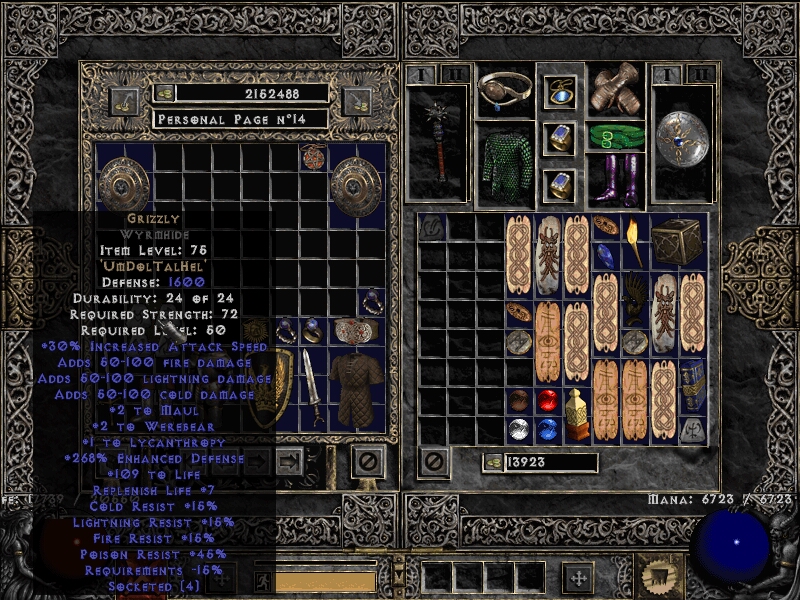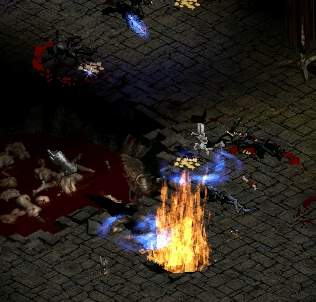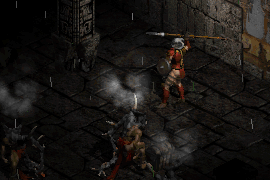
The remaster carries this characteristic over from the unique Diablo 2, as Diablo 2: Resurrected’s improved visuals and small quality-of-life modifications maintain the core of its loot-based gameplay the identical. This diversifies builds and gives players plenty of options when it comes to fun playstyles.įollowing is a list of runewords that are available in Diablo 2: Resurrected, as well as which items work and which runes are required.Diablo 2: Resurrected‘s Runewords are highly effective gadgets that may drastically enhance a personality’s viability. That means you can equip, say, a Beast runeword on a Sorceress and give her the ability to turn into a Werebear. They will receive the runeword's bonuses unless otherwise stated.

Runewords can be equipped on any type of character. Every little boost to stats counts in Diablo 2: Resurrected. Mercenary weapons and armor don't lose durability, so you can get the stat boost from the Ethereal property and not worry about it ever breaking. For example, if you're creating a runeword to equip on a mercenary, always use an Ethereal base. In the same sense, using the best runeword base (an item with sockets) possible is always recommended. A perfect runeword roll is always worth a lot more than an imperfect roll. When creating runewords, many have variable stats that determine how good of a roll you've created. Orbs are also not considered melee weapons. "Melee weapons" do not include ranged weapons, like bows and crossbows. Hammers will not work with runewords meant for maces. General "armor" includes shields, boots, gloves, helms, etc. "Body armor" only includes items worn on your torso. There are a few intricacies when it comes to weapon and armor types that you should make note of. Double- and triple-check the item type is proper - for example, the Insight runeword can be created in polearms and staves but not spears - and lay out the runes in the proper order before socketing them into the item.

The item must also be plain (white) magic (blue), rare (yellow), unique (gold), and set (green) items with the right amount of sockets will not work for runewords.įor this reason, you need to take great care when creating a runeword. The item must have the exact number of open sockets for the runeword to work, and the runes must be placed into the socketed item in the correct order. You must first find the proper runes to create the runeword, then you must find the corresponding weapon, shield, or armor that can accept the runeword. Runewords are some of the most powerful items you can craft in Diablo 2: Resurrected, though they do take quite a bit of work to accomplish. The Countess, found at the bottom of the Forgotten Tower in Act 1's Black Marsh, is another great source of runes. The Hellforge quest in Act 4 will always drop some runes, and it is often used as payment for a rush through the acts.
#DIABLO 2 RUNEWORDS HELMS UPGRADE#
This upgrade recipe is included in the rune chart below.

For example, if you have three El runes and need an Eld rune, you can place the three El runes in the Cube and hit the transmute button. Runes can also be combined together in the Horadric Cube this is colloquially called "cubing up" and it is a common way to get to the next level rune without having to find it in the wild. This is a great trick when you're low on gold and can't afford repairs at a vendor. For example, you can combine a Ral rune with a damaged piece of gear to repair it. Runes can also be used in certain Horadric Cube recipes. They are incredibly rare and can fetch a lot of loot in the game's online economy. Mid and high runes should not be parted with easily.
#DIABLO 2 RUNEWORDS HELMS FULL#
A full list of runewords can be found in the next section. Runewords, as they're called, are some of the most powerful items in the game, right up there with set items and uniques. However, the real magic of runes comes when you combine them in a specific order in a specific item. Runes are socketable items, just like gems, meaning you can put them into socketed gear to receive their effects. Single runes can drop anywhere in Diablo 2: Resurrected, starting in Normal difficulty through to Hell difficulty.


 0 kommentar(er)
0 kommentar(er)
